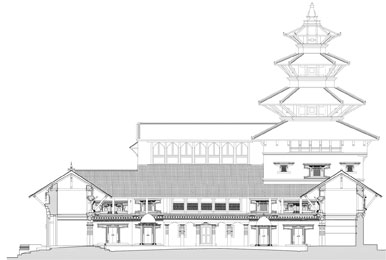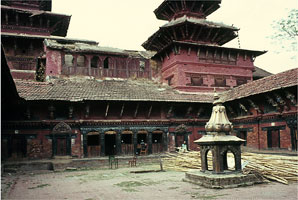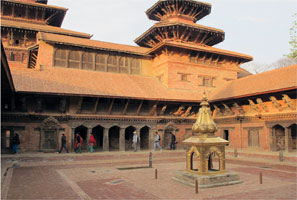MULCHOWK
RESTORATION: APRIL 2010 - NOVEMBER 2012FUNDED BY:
US AMBASSADORS FUND FOR CULTURAL PRESERVATION
WORLD MONUMENTS FUND/ ROBERT W. WILSON CHALLENGE TO CONSERVE OUR HERITAGE
SUMITOMO FOUNDATION
Originally established by Srinivasa Malla in 1666 and later renovated in the 1730s and 1850s, Mulchowk is the heart of Patan Darbar as well as the hub of its ritual activities. The courtyard is almost twice as large as the adjacent Sundari Cok, and slightly larger than its counterparts in Kathmandu and Bhaktapur. Mulchowk underwent several alterations over the past few centuries. The practice of painting doors and windows began in the Rana period and has been repeated ever since, primarily during coronations. Following the 1934 earthquake, the roof was reconstructed using flat machine-made tiles. Due to the scarcity of timber, rafters were widely spaced with little regard to their historical configuration.
In the 20th century, a combination of neglect, misuse, and inadequate restoration left Mulchowk in a state of disrepair even as it continued to function as a ritual space. Today, Mulchowk bears witness to many different architectural styles. During the latest restoration, the paving was rebuilt to match the excavated Malla-period design, and damaging paint finishes were removed to allow the intricate relief carvings to take on their intended appearance. The unusually large gate, integrated into the older facade in 1854, was also preserved. The dilapidated east and north wings were reconstructed, along with the entire roof structure and cover.


